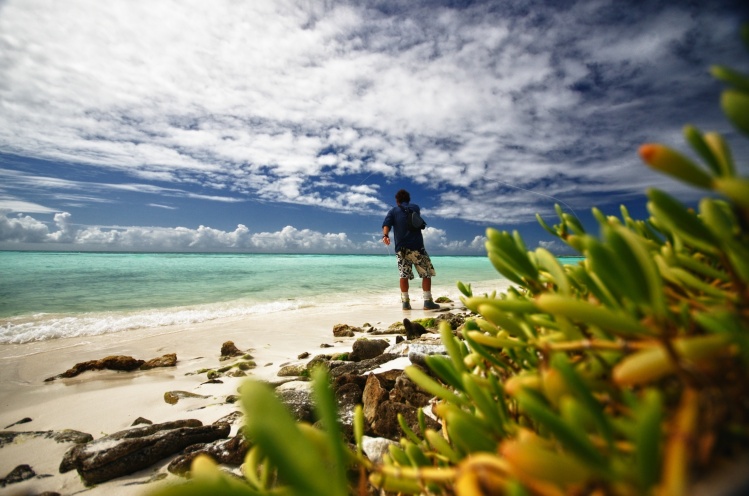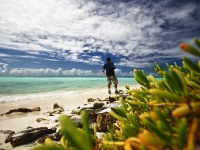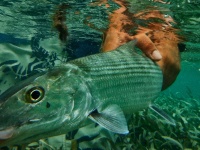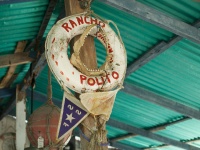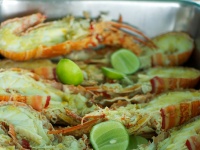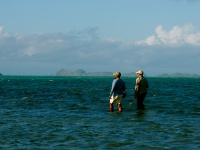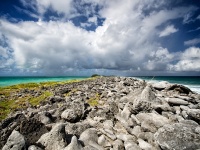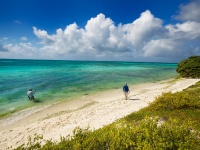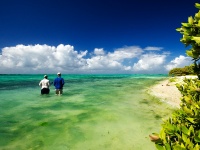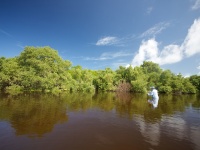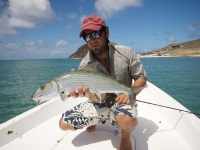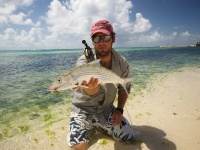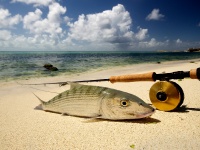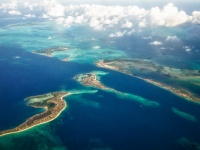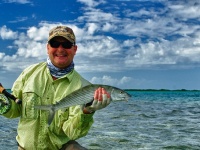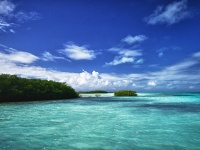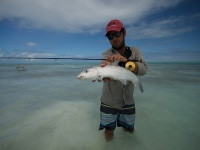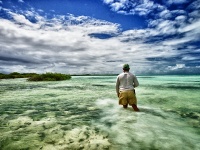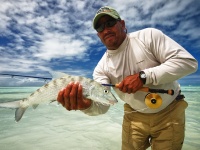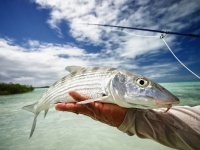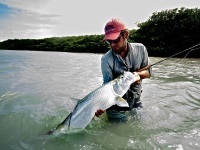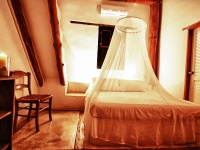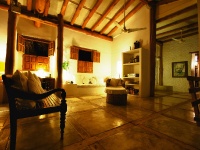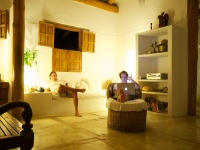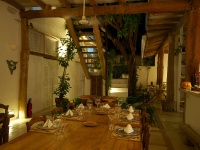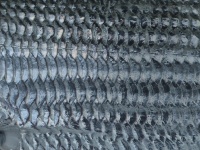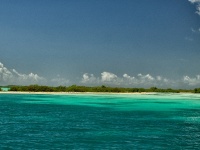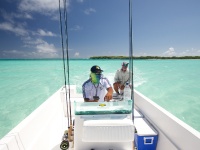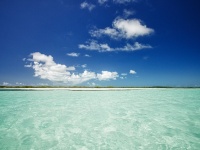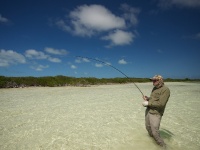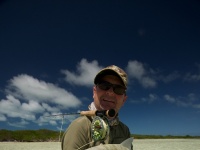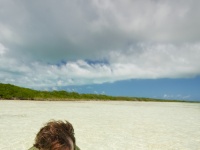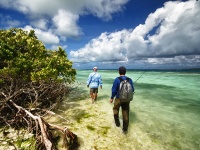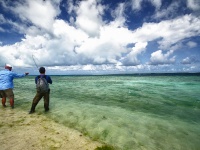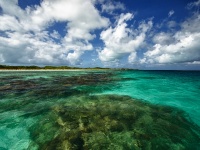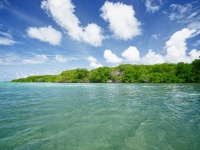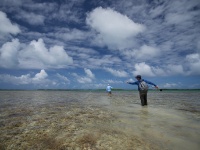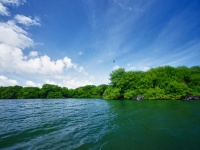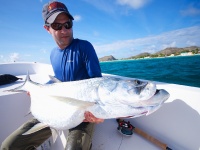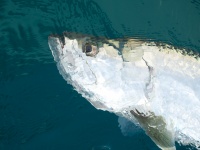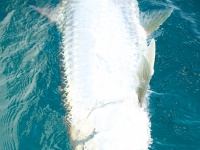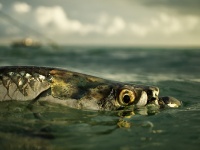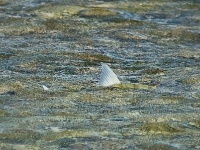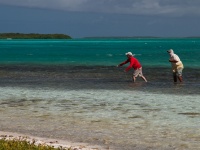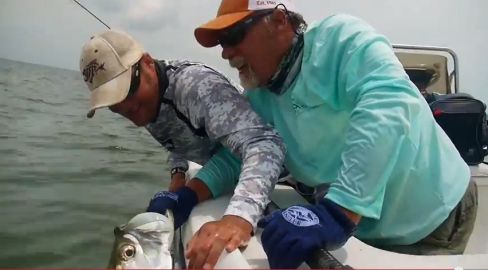Bonefish and Tarpon in Los Roques, Venezuela
After several weeks of planning, I finally departed to the famous National Park Los Roques in Venezuela.
Getting to Los Roques from Caracas is very easy, two or three companies offer daily flights from La Guaira to Gran Roque, the main island of the Archipelago. In case one travels with a group of people and wants to optimize time, it’s a good idea to book a private flight.
I met some old friends and we took a short flight to this magical place. Twenty minutes after departure, we started seeing the first coral barriers that protect the archipelago, creating this fantastic and colorful universe where hundreds of small islands with white sandy beaches and green mangroves, surface the blue waters. We flew around for a while and then landed to meet Felipe Reyes, founder of Fly Fishing Los Roques, who has been working there and gathering experience for more than twenty years.
Felipe and his team led us to the lodge, where we listened to the advice of the guides about recommended gear and fishing strategies for the first day. Then, we had a quick breakfast and went straight to the water.
The Gran Roque port is a special place; all kinds of fish are held there, from small sardines to giant tarpon, all of them swimming in harmony between the boat moorings. Hundreds of pelicans get together over every day in search of food, creating a total feeding frenzy on the water.
This place is an independent water ecosystem, with a visible food chain: lots of bonefish join to chase the pelicans as they drop the leftovers after diving for small fish. That’s when we can try to catch a two-figure bone.
Tarpons are generally cruising the edge of the drop off, waiting for the local fishermen to throw the waste of the fishing of the day.
The Flats and the Pancakes
It took us only fifteen minutes on board of the Yamaha 200hp powered panga to get to the first pancake. These are another geographical peculiarity of the archipelago: small flats that rise from deep waters, of just a few hundred square ft of size and covered by rotten coral and turtle grass. It is here where bonefish feed during the tidal changes, especially when tides are at its lowest point and just starting to rise.
Oswald, our guide, pointed out the first group of three “tailing” bonefish. We chose the fly rapidly: an olive bonefish Bitter. A short cast right next to the head, followed by a soft paused strip and, bam! First one on!! The first one to break the ice….That first fish is always the one that relaxes our body and mind, and make us one with the place.
In my opinion, Los Roques is possibly the best place to get started on the Caribbean saltwater fly- fishing; the opportunities and situations in which bonefish and other fish are found are countless. One can test its own skills in every possible situation and there are so many fish that missing strikes is not something to worry about.
Another interesting thing about this place is the variety of scenarios were one could fish, each requiring a different technique and strategy. For example, when one moves across the big flats or pancakes, wading should be done softly because the coral ruins crack when stepped on, making some noise. Getting close to bones is not an easy task but with patience one can get really close to them, and actually see when they chase the fly or the actual take.
Bonefish usually cruise around in small groups of two to five fish and sometimes are alone. Groups are easier because when one fish sees the fly, it immediately alerts the others and they start competing for it. But the best thing is to find a solitary fish searching for food, with its head almost buried on the sand, then one has to present the fly very gently right next to the fish.
A key factor is the timing when stripping. A strong, fast strip usually makes them spook; and a slow strip doesn’t call their attention. When bonefish come around, cruising for food, one has to move the fly and stop for some seconds, then start moving it again but changing the speed in every strip.
The strikes aren’t explosive but solid, it´s not usual to miss strikes. Bones’ mouths are pretty soft and fleshy, so a sharp hook does all the work.
The fight is at high speed in the first run, usually the longest run; then, after two or three shorter runs it becomes easy to bring them close and land them. Of course all of this happens when you catch average size bones and not monster bones, where the game is totally different. If we are lucky and the line doesn’t touch any coral or sticks we will land the fish with no problem.
The Beaches
Beaches are a whole different thing. Changing factors, due to tides and winds, can make water murkier, filled with floating seaweed; or totally clean and transparent.
The fishing we had in the beach coasts was really interesting because we would go after bigger and solitary fish that cruised around.
Generally, bonefish cruise really close to the shoreline, coming and going. When they are heading towards the angler, it´s easy because with a short cast, in parallel to the shore, and a slight move of the fly at the right moment always gets the bones attention and generally if they don’t refuse the fly they will take it. When the fish are swimming in the same direction as we are walking, it’s more complicated, considering the cast must be longer and there´s a risk of placing the line over them, spooking them. All in all, this last was certainly one of my favorite fishing situations. Guides recommend flies like big, weighed Gotchas or Crazy Charlies in light sandy colors, or the famous Gummy Minnow, for this kind of fishing.
Casting a fly to those big bonefish schools is the easiest and boring way to catch them, there´s no secret or technique to be learned but sometimes it´s the only way to get them if the tides or weather are not right.
Tarpons were on my bucket list, so I was lucky to get some on this trip. Los Roques is not the place one goes for tarpon, but if one has the time there are good chances of getting a good surprise.
The mangroves and their inner lagoons are the perfect place to look for baby tarpons and snooks. They are found here because they are protected from bigger predators and because they find other fish to ambush too. If you want to get a big tarpon, the port is the perfect place; there’s lots of food available for them over there.
The best moment is when tarpons leave the deep waters and approach the shore to feed on minnow schools. I was really lucky to be there on one of those days. We found a big group of tarpons feeding and rolling some meters away from the pier. We approached them smoothly with the boat, set the anchor and prepared the gear. Some minutes later, the school started rolling some fifteen or twenty meters away from us.
The technique is really simple: cast in front of the shoal, let the fly sink (in this case, an extra large Gummy Minnow), strip really slowly but without stopping, almost dragging the fly.
I made less than ten casts and got a take.
The take was pretty firm; the stripping speed is so slow that the fly does not leave the mouth. Then one has to hold the line some seconds so that the hook gets properly set, and prepare to keep the line tense all the time.
The fight is magnificent; it’s very acrobatic and resistant due to its capacity to get oxygen with a simple puff of air.
That wasn’t the only tarpon strike; we had a great active morning until the tarpon shoal began to go back to the deep. We got back too, and I had the biggest smile ever.
Permits are the fish that we didn’t go after on this trip. I had planned to dedicate one whole day to them, but the guide that was an expert on permit had had a long rough night; so it will have to be next time.
Gear:
Bonefish
Rods: line weight 7 to 9, 9-feet, fast action.
Reel: strong disc drag, and 150 yards of 20lb backing just in case.
Lines: WF tropical, floating line. (I like finer long-torpedo lines)
Leaders: 14 to 18 feet. Tippet from 10 to 15 lb. 12 is the one i used the most.
Flies: Crazy Charly, Gotcha, Bonefish Bitter, some shrimp imitation and Gummy Minnows.
Tarpon
Rods: line weight 7 to 9, 9-feet, fast action.
Reel: strong disc drag and 200/300 yards of 30lb backing or 50lb Spectra.
Lines: Take three because of varying fishing depth. Floating, Intermediate and Sinking.
Leaders: very simple, basic leaders of 7 to 9 feet, and between 40 and 50 lb fluorocarbon.
Flies: synthetic hair minnows on natural looking colors,, also black combined with purple. Large Gummy Minnows.
Snook
Rods: line weight 8 to 9.
Reel: Not that important, same as the ones for bonefish will do.
Line: WF, floating.
Leaders: standard, 9 feet and fluorocarbon or nylon of 15 to 25 lb.
Flies: any small fish imitation works well.


